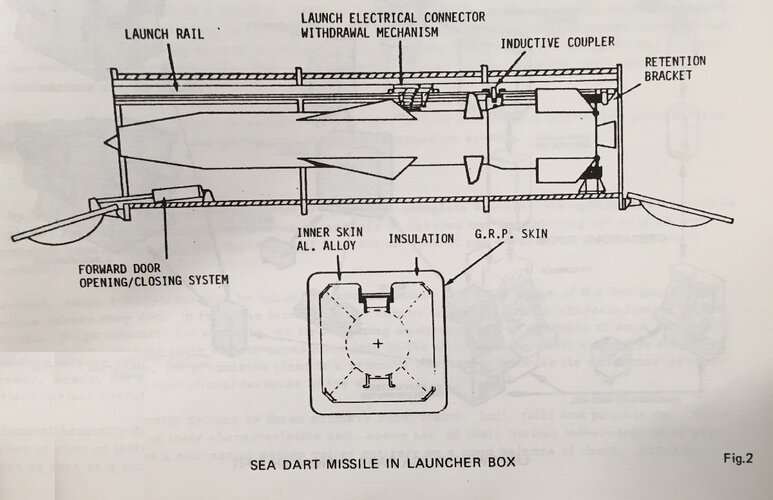Another thought about a Seaslug development.
The mkIII is likely a 1950s effort and the potential of application of related technologies from Blue Envoy (originally 200nm but later 150nm range) resulted in the whole thing spiralling off into essentially new missiles (NIGS), new 3D radar (985 NSR etc...) new guidance radar, and new combat management system (ADAWS). Meanwhile a MkII upgrade was developed which doubled effective range to 30nm.
NIGS hit the buffers in the early 60’s.
By which point SIGS had come along. But again, failure to develop SSSR ASWRE C-band 3D radar hampered any upgrade and new build. Type 988 Broomstick proved part of both why Type 82 was cut and why such an upgrade wasn't affordable for the Counties.
Now had a tighter focus been held on a mkIII Seaslug, and here Dilandu is right to suggest the addition of IR seeker for terminal homing. Or the use of polyrod interferometer SARH.
Then with the right improvements in rocket motor, autopilot and Command Guidance, it's possible to get a Seaslug-like missile much greater performance. It's quite reasonable to expect something like 60nm range, maybe more, maybe 90nm. With greater engagement envelope and thus potential against faster and higher targets.
Had ASWRE C-band 3D radar reached production, we'd see this piled on Counties, Type 82, Carriers and Frigates in various scales.
Now that potential has knock on effects, because if you're developing such system, it's applicability for say the Army or Airforce isn't to be ignored.
An ironic twist is a Seaslug MkIV might supplant Thunderbird and even Bloodhound......
In fact had a constrained Seaslug MkIII progressed in the mid-to-late 50's, Bristol's jamming Blue Envoy systems onto Bloodhound (knocked up in the back of taxi) might be rejected.


